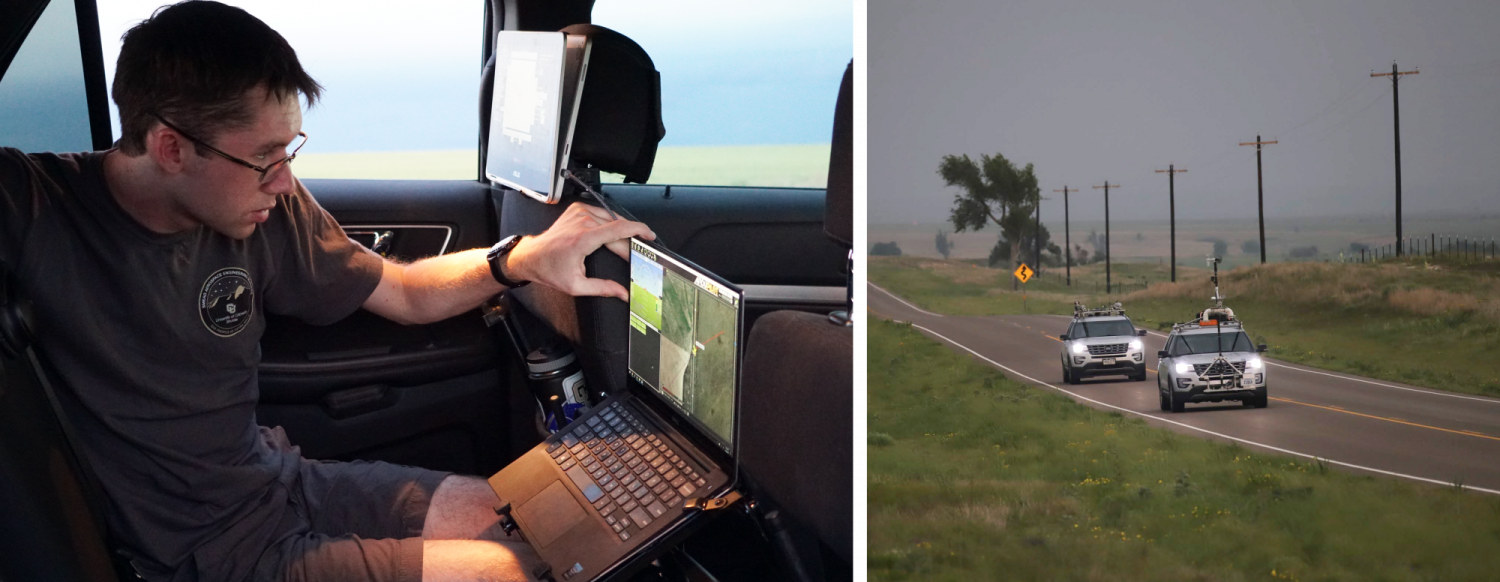
Drones get inside look at supercell storms

Professor Eric Frew talks drone-based storm research and the movie Twister.
Podcast
Researchers from CU Boulder flew drones into severe storms this spring for project TORUS, one of the largest and most ambitious drone-based investigations of meteorological phenomena ever, with students leading much of the work.
Project TORUS–or Targeted Observation by Radars and UAS of Supercells – is a partnership between CU Boulder, the University of Nebraska-Lincoln (which is leading the work), Texas Tech University, the University of Oklahoma and the National Severe Storms Laboratory, and it will continue into 2020. The goal of the project is to collect data to improve the conceptual model of supercell thunderstorms–the parent storms of the most destructive tornadoes – to help with future forecasting. Better forecasting means more warning time and fewer false alarms, potentially saving lives in the future, said Professor Eric Frew, who was a PI on the project.
“What was really exciting about what we were able to accomplish was that these drones were designed, fielded and operated by students,” Frew said. “I had sophomores and juniors on this team accomplishing something that had never been done before.”
CU’s portion of the project was led by faculty from the College of Engineering and Applied Science through the Integrated Remote and In Situ Sensing initiative (IRISS). The team was responsible for piloting up to three drones simultaneously around the storms to measure temperature, pressure, humidity and wind speeds. Drones are a critical component of the overall TORUS project because they sense data from inside the storm, data that cannot be obtained without physically being there to take the measurements. In all, the CU team totaled over 40 hours of air time on 51 flights, including seven tornado-producing storms over the nearly monthlong deployment throughout the Great Plains.

The college has been using drones for this type of work since 2010 and was the first to do so in the world. The lessons learned over the years informed the design of the new unmanned aircraft used this spring. Built from lightweight yet high-strength foam from RiteWing RC, the drones include an avionics system and many other aspects custom-built by the team. They are also modular in design, allowing for fast and easy repairs in the field.
Aerospace engineering senior Danny Liebert pilots one of the drones for the team and said he loves how rugged it is compared to the previous “TTwistor” model.
“The TTwistor drone we used was great but just not as durable. These new aircraft are awesome. They take it like a champ out there,” he said.
IRISS Engineering Manager Steve Borenstein said the opportunity for hands-on experience for students through the project is unrivaled.
“Our field campaigns challenge the entire team every day in terms of solving logistical problems and technical troubleshooting. Every student has a critical role in the preparations and mission deployments, including pilots, operators, and ground support,” he said. “Deployments are a tough three weeks, but the students leave with experience and memories that will last them forever.”








